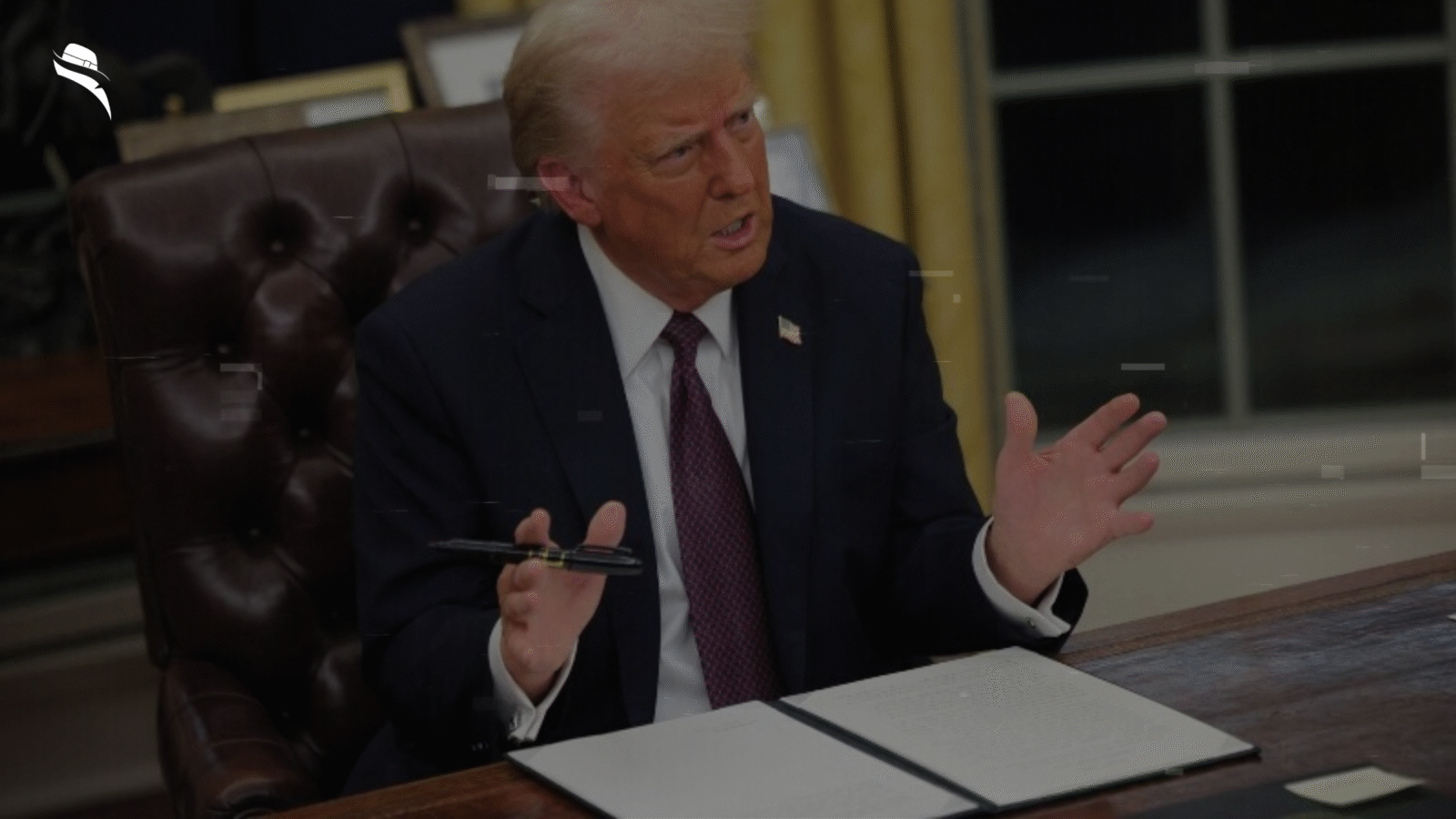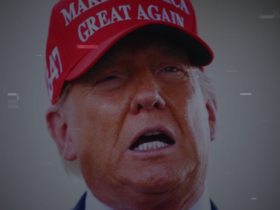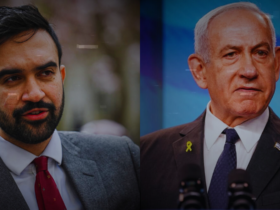Trump executive order targeting the controversial cashless bail system in Washington, D.C., has sent shockwaves through the criminal justice community. Recently, former President Donald Trump signed this significant measure aimed at eliminating no-cash bail policies that have been in place in the nation’s capital since the 1990s. According to reports, the executive order threatens to revoke federal funding for jurisdictions that continue to implement cashless bail systems across the country.
Furthermore, Trump’s executive order today could potentially withhold government-backed project approvals from D.C. if local officials refuse to end the policy. During the announcement, Trump claimed that since his plan to make D.C. safer took effect over the past 11 days, there have been zero murders, while authorities have “arrested a total of well over a thousand people” and “took hundreds of guns away from young kids”. Notably, this action comes amid ongoing debates about bail reform, with recent research from the Data Collaborative for Justice indicating that eliminating money bail increased recidivism for certain offenders while decreasing it for others. The executive directives specifically target Washington, D.C., but also aim to influence similar policies nationwide through various federal mechanisms.
Trump signs executive order to end cashless bail in DC
President Donald Trump signed two significant executive orders on Monday aimed at eliminating cashless bail policies both in Washington, D.C. and nationwide. The signing ceremony took place in the Oval Office of the White House.
What the executive order says
The executive order specifically targeting D.C. directs the administration to take punitive actions if the city refuses to change its cashless bail policy. These potential consequences include withholding federal funding, services, or government-backed project approvals from the District.
Additionally, the order instructs law enforcement officials to ensure that individuals arrested in D.C. are taken into federal custody “to the fullest extent permissible under applicable law”. This measure aims to bypass the local cashless bail system altogether.
The second, broader executive order directs Attorney General Pam Bondi to compile a list of all jurisdictions nationwide that maintain cashless bail policies. The order then requires identification of federal funds that could be “suspended or terminated” in these locations.
When and where it was signed
The executive orders were signed on Monday, August 25, 2025, in the Oval Office. Before signing, Trump addressed reporters, stating: “We are at a point where Washington is booming again”.
Earlier this month, Trump had hinted at ending the no-cash bail policy, though he suggested he would do it through Congress using Republican votes “because the Democrats are weak on crime”. However, he ultimately chose to act through executive authority.
Who stood with Trump during the announcement?
Several key administration officials stood with the president during the signing ceremony. Those present included Attorney General Pam Bondi, Vice President JD Vance, Secretary of Defense Pete Hegseth, and Homeland Security Secretary Kristi Noem.
U.S. Attorney for D.C. Jeanine Pirro had appeared on “Fox & Friends” earlier that morning to criticize the cashless bail system, claiming it was “when all of the problems started” and asserting that defendants released under this system “are reoffending and they’re reoffending again”.
Trump threatens federal funding to enforce bail policy
The nationwide component of Trump’s executive action expands far beyond the District of Columbia. Under the order, jurisdictions across America that maintain cashless bail systems face potential financial penalties.
How the order impacts jurisdictions nationwide
The executive directive requires identification of federal funds that could be “suspended or terminated” in localities that continue cashless bail practices. This measure potentially affects states like Illinois, New Jersey, and New Mexico that have eliminated cash bail entirely, alongside places like New York that reformed bail laws for most misdemeanors and non-violent felonies in 2019. Previously, Trump’s Department of Justice had already canceled more than 360 grants worth hundreds of millions of dollars in April.
What legal tools are being used
The administration claims “extraordinarily broad” authority to enforce this policy. The order leverages federal funding as the primary enforcement mechanism, similar to tactics being employed in immigration policy. Moreover, the White House referenced a Yolo County, California, study that claimed a “zero bail” policy increased crime by 163%.
Role of Attorney General Pam Bondi
Attorney General Bondi will compile a comprehensive list of no-cash-bail jurisdictions throughout the country. Subsequently, she must identify potential federal funding streams that could be restricted. Bondi’s department will determine whether jurisdictions maintain compliance with the new requirements.
What is cashless bail, and why is it controversial?
“That’s what started it in New York and they won’t change it, they don’t want to change it. That’s what started it in Chicago.” — Donald J. Trump, President of the United States
Cashless bail represents a fundamental shift in pretrial justice, allowing defendants to be released without paying money while awaiting trial. This system has become a focal point in the debate over criminal justice reform.
Definition and origin of cashless bail
Cashless bail evolved from the Federal Bail Reform Act of 1966, which encouraged releasing defendants through the least restrictive means rather than imposing financial conditions. Originally, bail was designed solely to ensure court appearances, yet over time it morphed into a system that critics argue perpetuates wealth-based incarceration. Under traditional cash bail, individuals must pay a set amount or remain jailed until trial, regardless of innocence or guilt.
Arguments from supporters: fairness and equity
Proponents maintain that cash bail unfairly punishes the poor and disproportionately impacts communities of color. Black and Latino men face bail amounts 35% and 19% higher, respectively, than their white counterparts for similar crimes. In fact, most people unable to afford bail come from the poorest one-third of society. Supporters argue the current system violates constitutional rights, including equal protection under the Fourteenth Amendment and the prohibition against excessive bail in the Eighth Amendment.
Critics’ concerns: recidivism and public safety
Conversely, opponents claim eliminating cash bail gives “drug cartels free rein” and represents a “slap in the face to victims” seeking safety. Critics frequently highlight high-profile cases where released defendants committed new offenses. Such concerns have fueled political backlash against reform efforts despite limited evidence supporting these fears.
Recent data on bail reform outcomes
In reality, comprehensive research reveals no statistically significant relationship between bail reform and crime rates. Studies across 22 reform cities compared with 11 non-reform cities found no evidence linking bail reform to increased crime. Furthermore, in New Jersey, 95% of defendants were released pretrial, with 89% appearing at trial. Similarly, Washington D.C.’s system maintained 88-91% court appearance rates with 98-99% of released defendants avoiding rearrest for violent crimes.
How cities and leaders are responding to the crackdown
Municipal leaders have responded forcefully to the Trump administration’s latest executive orders on bail reform, primarily arguing they overstep federal authority.
Reactions from D.C. and Chicago officials
In D.C., local leaders warn the city faces a $1 billion budget shortfall that could force cuts to essential services—including police. Meanwhile, Illinois Governor J.B. Pritzker directly challenged Trump on social media: “Donald, thanks for the compliment! Let’s not lie to the public, you and I both know you have no authority to take over Chicago”. Senator Dick Durbin characterized the D.C. strategy as merely “political theater”.
Statements from Mayor Brandon Johnson
Chicago Mayor Brandon Johnson called Trump’s approach “uncoordinated, uncalled-for and unsound,” arguing it “has the potential to inflame tensions between residents and law enforcement”. Johnson emphasized that his office received no direct communication from the White House regarding potential deployments. Consequently, he highlighted Chicago’s recent success in reducing homicides by 30%, robberies by 35%, and shootings by almost 40% over the past year.
Potential legal challenges and political fallout
Legal experts note constitutional concerns with Trump’s nationwide bail order. Lisel Petis from R Street Institute stated that attempting to ban cashless bail policies “oversteps constitutional boundaries”. Currently, the Tenth Amendment reserves powers not given to the federal government for states or citizens—”That includes the power to decide how to handle bail”. Nevertheless, Congress could legally tie bail policies to federal grant eligibility.
Final Thoughts
This latest executive order marks a significant shift in federal-state relations concerning criminal justice policy. The directive potentially reshapes the landscape of bail reform efforts that have gained momentum across numerous jurisdictions since 2018.
Political analysts note that by focusing on crime and public safety, Trump appeals directly to suburban voters who cited safety concerns in recent polls. Indeed, this move aligns with broader campaign messaging that positions Trump as tough on crime amid ongoing debates about public safety.
Legal scholars remain divided on the constitutionality of federal intervention in local bail policies. Some experts point to the Tenth Amendment’s reservation of powers to states, yet others acknowledge Congress’s authority to establish conditions for federal funding.
Above all, the executive order highlights the growing tension between reform-minded prosecutors who favor risk assessment over cash bail and those advocating for stricter pretrial detention policies. In essence, the debate centers on balancing individual rights against public safety concerns.
As a consequence, jurisdictions must now choose between maintaining their bail reform initiatives or risking loss of federal funding—a decision that will likely trigger litigation in the coming months. In the end, courts may ultimately determine whether executive authority can fundamentally alter local criminal justice procedures or if such changes require legislative action.
FAQs
Q1: What is the executive order signed by Donald Trump regarding cashless bail?
A1: On August 25, 2025, former President Donald Trump signed two executive orders aiming to eliminate cashless bail policies in Washington, D.C., and potentially influence similar systems nationwide. The orders include measures to withhold federal funding or project approvals from jurisdictions that maintain no-cash bail systems.
Q2: Why is cashless bail controversial?
A2: Cashless bail allows defendants to be released pretrial without paying money, aiming to reduce wealth-based incarceration. Supporters argue it promotes fairness and equity, while critics claim it can increase recidivism and compromise public safety.
Q3: How does the order impact Washington, D.C.?
A3: The order threatens to withhold federal funding or federal project approvals if D.C. continues implementing cashless bail. Law enforcement may also be instructed to take arrested individuals into federal custody, bypassing local no-cash bail systems.
Q4: Does the executive order apply nationwide?
A4: Yes, a broader component of the order instructs the Attorney General to compile a list of all U.S. jurisdictions maintaining cashless bail. The administration may suspend or terminate federal funding in these areas, potentially affecting states like Illinois, New Jersey, New Mexico, and New York.
Q5: Who is responsible for enforcing this order?
A5: Attorney General Pam Bondi is tasked with identifying jurisdictions using cashless bail and determining federal funding that could be restricted. Federal agencies will use funding leverage as the primary enforcement tool.
Q6: What are the arguments for and against cashless bail?
A6:
-
Supporters: Cashless bail prevents the poor from being jailed solely due to inability to pay, reduces wealth-based disparities, and maintains high court appearance rates.
-
Critics: Opponents argue it allows repeat offenders to commit new crimes and may compromise public safety, citing anecdotal high-profile cases.
Q7: What does research say about cashless bail outcomes?
A7: Studies across multiple cities show no significant link between bail reform and increased crime. In D.C., 88–91% of defendants appeared in court on time, and 98–99% of released individuals avoided rearrest for violent crimes.
Q8: How have local officials reacted to Trump’s executive order?
A8: Officials in D.C. and Chicago criticized the order as overreaching and politically motivated. Chicago Mayor Brandon Johnson called it “uncoordinated” and emphasized recent crime reductions under local policies. Illinois Governor J.B. Pritzker stated that Trump lacks the authority to intervene in state or city bail systems.
Q9: Are there legal challenges expected?
A9: Yes, constitutional experts have raised concerns regarding federal overreach, citing the Tenth Amendment, which reserves powers not given to the federal government to the states. Courts may eventually decide whether executive authority can alter local bail procedures or if legislative action is required.
Q10: What is the broader significance of the executive order?
A10: The order signals a major tension between federal authority and local criminal justice reform efforts. It highlights ongoing debates on balancing public safety with individual rights and may shape bail reform policies nationwide through funding leverage and political pressure.
Want to explore all our latest updates? Head back to Decoding Affairs and continue reading.







Leave a Reply